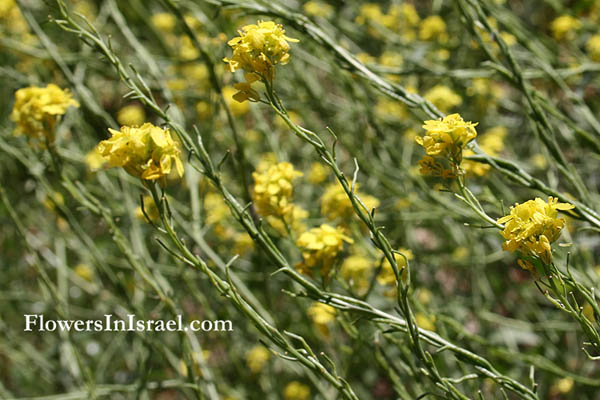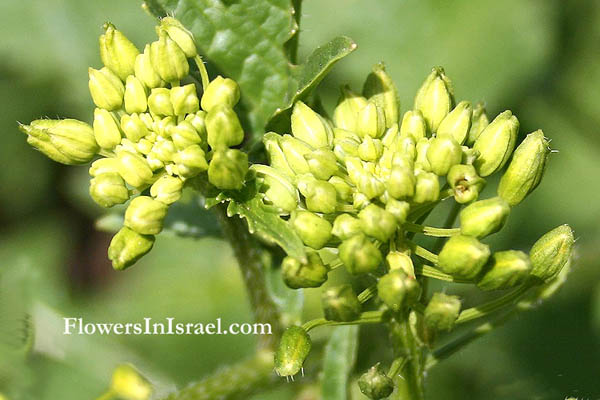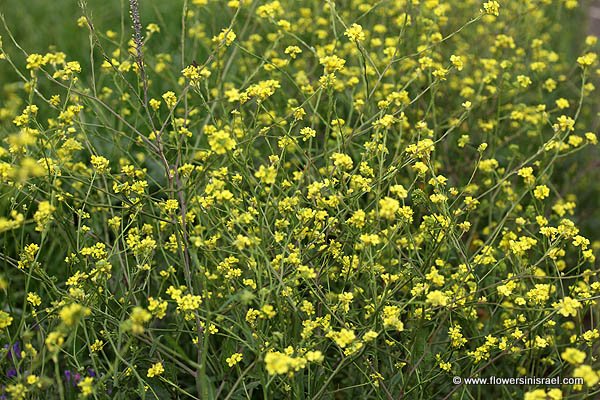Sinapis incana, Hoary Mustard,
Hebrew: לפתית מצויה, Arabic: خزامي
| Scientific name: | Hirschfeldia incana (L.) Lagrèze-Fossat | |
| Scientific name: | Brassica geniculata (L.)(Desf.) J. Ball, Brassica incana Ten., Sinapis incana L. | |
| Common name: | Hoary Mustard | |
| Hebrew name: | לפתית מצויה | |
| Arabic name: | خزامي | |
| Family: | Cruciferae / Brassicaceae, מצליבים |

|
| Life form: | Annual | |
| Stems: | 90-120 cm tall ;branched from the base; each branch branches repeatedly; usually glabrescent to densely hairy | |
| Leaves: | Alternate, rosette, dissected, dentate or serrate | |
| Inflorescence: | Racemes elongate in fruit | |
| Flowers: | 4 sepals; 4 yellow petals; 6 stamens (4 long, 2 short stamens) | |
| Fruits / pods: | 7-16 mm long × 1-1.5(-1.8) mm wide; weak veins on dried fruit; seeds in fruit and beak; beak of fruits 3-6.5 mm long, (0-)1(-2) seeded, swollen, tapering to a persistent style c. 1 mm long at tip; seeds 0.9-1.4 mm long, ovoid to subglobose, brown | |
| Flowering Period: | January, February, March, April, May | |
| Habitat: | Batha, Phrygana | |
| Distribution: | Mediterranean Woodlands and Shrublands, Semi-steppe shrublands, Shrub-steppes, Deserts and extreme deserts, Montane vegetation of Mt. Hermon | |
| Chorotype: | Med - Irano-Turanian | |
| Summer shedding: | Ephemeral |

Derivation of the botanical name: Hirschfeldia, named for Christian Cay Lorenz Hirschfeld. (1742 – 1792), a German horticulturist. incana, very gray, hoary. Brassica, the classical Latin name for cabbage. geniculata, bent sharply like a knee. Sinapis, sinapi, Latin name for the mustard plant, from the flavor of the seeds. The Hebrew name: לפתית, lefatit, formed from לפת, lefet (=to twist) with suffix -it; Arabic: lafata (= he twisted, turned, bent).

|